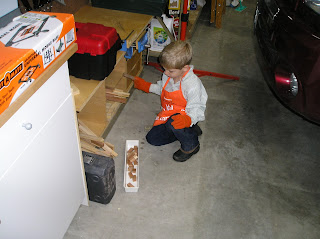This afternoon I worked on fitting the lids for the Zebrawood boxes. The design calls for a rabbet around the bottom surface of the lid which forms a relief to fit into the opening of the box. I began my session in the shop by measuring the inside dimensions of each Zebrawood box. Much to my dismay many of the measurements showed some variation! OK, so it was only a 128th to a 64th of an inch…but still!
Knowing that the boxes had some slight variations, I cut up a stack of test lids from some birch plywood scrap. By the time I was fitting the second lid I realized that a test piece for each box was overkill, but the process was a good experience in setting up the operation.Once I organized all the measurements and test pieces I set up the table saw for the rabbet cuts. I switched out the thin kerf blade for the wider Oldham blade. I want the relief on the lid to have some heft so the wider blade will allow for a deeper rabbet around lid.
These lids will be run over the blade and along the rip fence so I used a zero clearance insert to maximize the surface around the blade and reduce tear-out.
These are some touchy cuts so safety is a significant consideration. They could be cut without any form of push stick since these aren’t through-cuts, however the blade is exposed on the outside of the cut and the distance to my fingers would only be a couple of inches. I used a length of plywood scrap of the same thickness as my test parts and lid stock to push the pieces through the cuts.
When cutting the rabbets into the lids I left them just a little proud of the inside dimensions of the boxes and then fit each one with a sanding stick. The idea is to get a snug fit so that the lid doesn’t rattle around, yet can be placed and removed easily.
By the end of today’s stint in the shop I had all four lids fit to their boxes.
The next steps will include cutting an angled profile around the edges of the lids, cutting a small chamfer around the bottom of each box, some final sanding and a clear finish. We’re almost ready to call these a wrap!
While I was working on the lids Danger Boy was working on some much needed organization of his workshop area. He cleaned up his wood collection to make some room for his new toolbox. Things actually take a little longer when he comes along to “help” but you can’t imagine how great it is to hear this little guy come running every time I mention going out into the shop.
Pete











































.JPG)





